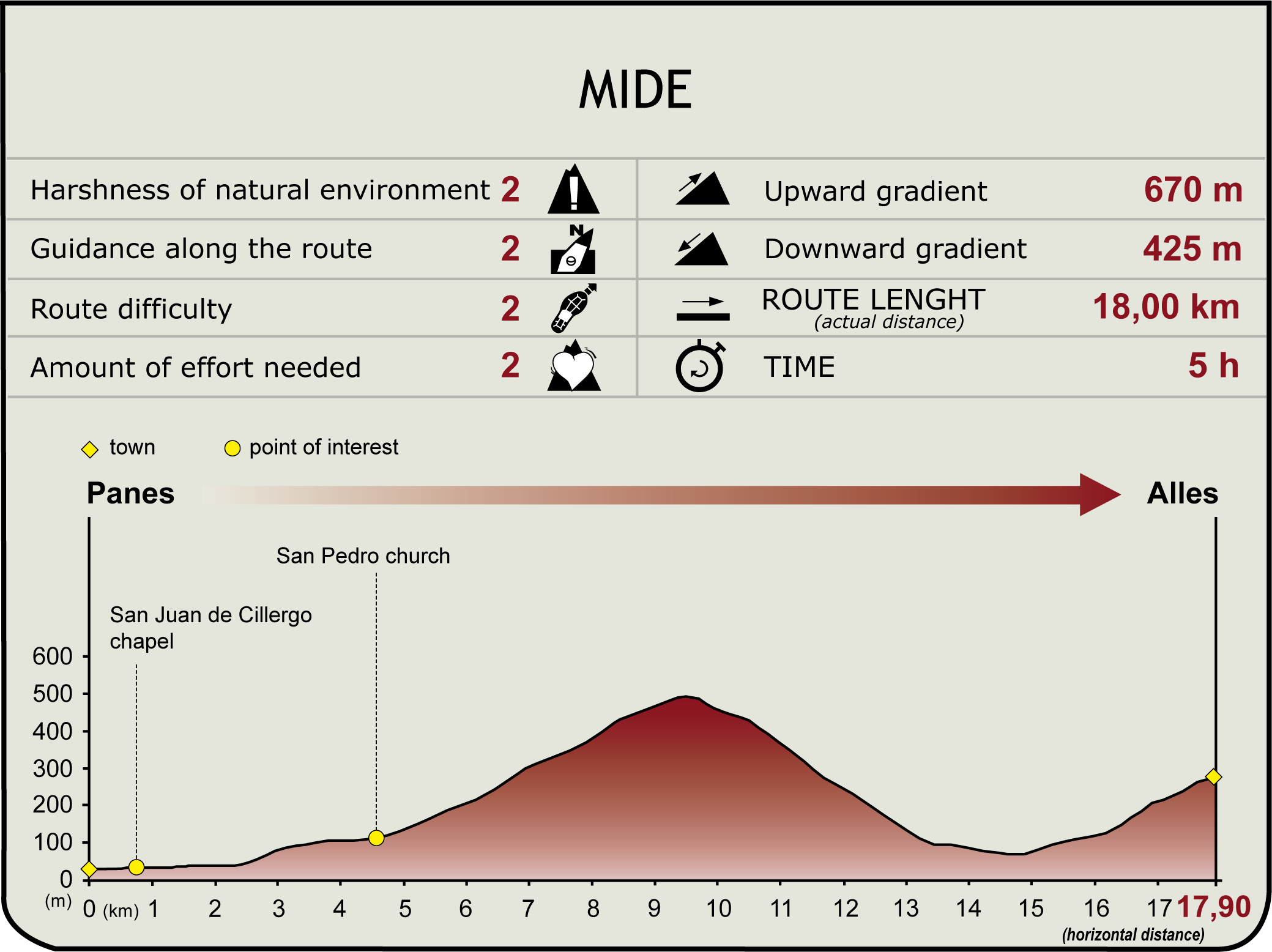Net of Natural
Trails

Stage 1: Panes - Alles
Description
Across eastern Asturias
The first stage of the Cantabrian Mountains Nature Trail runs along eastern Asturias, across the slopes of Sierra del Cuera Protected Landscape, between the Peñamellera Baja and Peñamellera Alta counties, linking their capitals, Panes and Alles.
The route starts at Panes, capital of Peñamellera Baja County, a town with a long bowling tradition, and continues east along the foothills of Sierra del Cuera, crossing through various small villages, rivers and biologically diverse forest tracts, to arrive at the village of Alles, capital of Peñamellera Alta.

The Bowling Museum of Asturias is located in the Plaza de Panes. This ancient game has a long tradition in the Cantabrian Strip, in particular in Asturias and Cantabria. The Bowling Museum, sponsored by the Picu Peñamellera Bowling Club, is the first in Spain dedicated to this traditional sport, and was opened in April 2003. The Bowling Museum, which operates under the aegis of the Ethnographic Museum of Eastern Asturias located in Porrúa (Llanes), has a large collection of over a thousand pieces, and is the only Spanish museum dedicated to a local variety of bowling.
The section starts in the car park of the Botanical Garden at Panes, to the left of the information panel. From the panel, the route follows the directional signs painted on lampposts and the wooden railing. The first stretches run along the floodplain of the lower River Deva. Several panels distributed throughout the first few metres of the Trail, by the Botanical Garden, provide information on the vegetation found in Picos de Europa County.

The derelict church of San Juan de Ciliergo, built between the twelfth and thirteenth centuries, can be found after crossing a small wooden bridge to the left of the path. The church, burnt in 1936, has no roof and all that still stands is the triumphal arch and its side walls. A large belfry, adorned with a pediment with an engraved stone cross, graces the main façade. A few metres further on, care should be exercised when the route meets the paved road N-621.
The Nature Trail crosses the River Deva by the first bridge to the right, then climbs gently up the Cares River Valley, from where panoramic views of the river and Pica Peñamellera can be seen in the distance, and of Sierra del Cuera, usually shrouded in snow in winter. Here, the gravel road traverses the town of Tobes, past the church of San Pedro, and immediately after, turns off to the left towards Bores, located on the slope of Pica Peñamellera. Both rural communities are located between meadows demarcated by limestone walls, studded with copses and rocky outcrops. There are also holm oaks (Quercus ilex) and holly oaks (Quercus rotundifolia), protected under regional legislation as vegetation of special interest. In Bores, the route climbs through meadows and farms dotted with traditional cottages.

Leaving Peñamellera Pica always to the right, the dirt road climbs down through Collada Ardines, which overlooks Mier, a rural town on the slope of El Llambrial crossed by the River Cares, surrounded by hardwood forests. Leaving Mier behind, care should be exercised as the Trail continues along a limestone hill only a few metres from the River Cares. In the town of Mier, cyclists are advised to follow the road that crosses the River Cares by the bridge that gives access to Mier (local road PA-1) and turn right onto AS-114 until its intersection with AS- 345, where the signposted route continues.
Further on, the road crosses the Niserias suspension bridge and continues along the paved road AS-345 to Besnes, from where the dirt road climbs gently through chestnut (Castanea sativa), hazel (Corylus avellana) and oak (Quercus robur) trees that line the banks of the River Besnes, until it arrives at Alles, and the end of route.
Sites of interest
Puntos de interés
Culture
Hydrography
Municipality
Hostel
Profile

Highlights
Further information
Bowling in Asturias
The first historical reference to this game in Asturias dates from 1495, when Nuno Bernaldo de Quirós insulted Alonso de Quintanilla, Chief Accountant of the Catholic Kings, on the eighth day of Corpus Christi, during a bowling orbyrlos game. Bowling continued as a popular sport with people of all social classes. The bowling alley, located in the town centre, usually next to the church, was a place of meeting and friendship.
There are fourteen different game modes in Asturias: Cuatreada, Birle or Bolo-Palma, Bolo de Tineo, Batiente Rodado, Batiente de Cabo Peñas, Bolo de Cangas del Narcea, Bolos de Saliencia, Pasadiez, Bolos de Luarca, Bolos Rodados, Cuarta de Degaña, Bolos del Navia, Cuatrín de Agones and Dexabolu.
Salmon Fishing
The River Cares is not only beautiful, but also a thriving tourist attraction for fishing salmon, trout and sea trout, which abound in its waters. It is the third best salmon river in Asturias, behind Narcea and Sella. Both Deva and Cares are famous for the quality of its salmon. The influx of anglers from Spain and abroad during the fishing season provides an enormous economic boost to the town of Panes.
Many areas of the River Cares are closed to fishing. Those open to all anglers are located in the upper or lower sections of the river. It has 17 fishing preserves, including two in the River Deva, managed by Asturias, where most of the best fishing takes place. Around Niserias, after the dam and the power plant, there are several famous salmon preserves, including La Mina, Los Picayos, La Curva, Coto Niserias and Niserias Reserve. The season begins in May/June. Following that period, it becomes a “catch and release” preserve. The sea trout season begins in mid-June.


